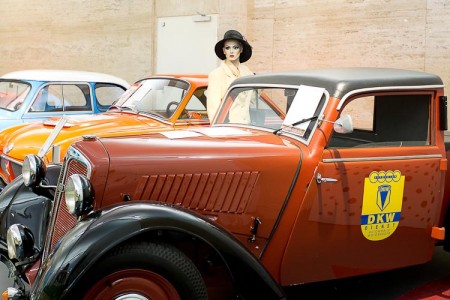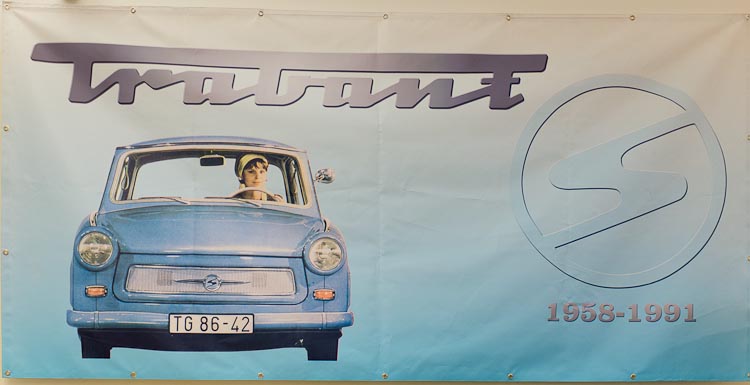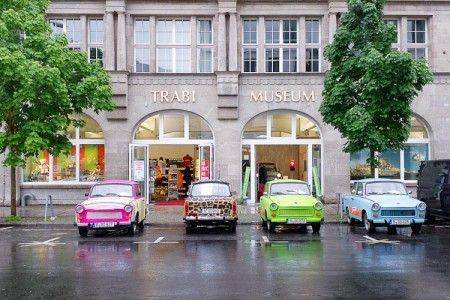
A cold Berlin winter is the perfect time to visit some of the 180 museums in the city. Apart from the famous ones located on the Museumisland, Berlin has many small museums on various themes. One of them is the relatively new Trabi Museum, a small and charming exibition showing a collection of Trabants. Although situated around the corner of the touristic Checkpoint Charlie, you rather experience a nostalgic journey back to the 80s and beyond.
History of the Trabant
During the 50s, the family car slowly turned from a luxury item into an everyday product. The Volkswagen Beetle, which was developed in the mid 40s, was produced in West Germany and therefore not available for the population of East Germany. It was 1954 when the East-German authoroties ordered the development of a family car that should not cost more than 4000 Mark. It was called Trabant, which means satellite: a buddy that’s always there to guide you.
In 1955 the first prototype P70 was developed and since 1957 the Trabant P50 was in production, followed by the P60 in 1962 and P601 in 1964. The Trabant, or “Trabi”, was produced by the VEB Sachsenring Automobilwerke in Zwickau untill 1991. More than 3 million cars have been built and almost 80% of the population owned one, sometimes after having been on the waiting list for several years. The “racing cardboard” was made of thermosetting plastic, and filled with a two-stroke engine it could reach 26 horsepower.

The Trabant was competitive to other family cars during the 50s and 60s. Although it was developed further, the SED did not allow modernisations, so that the Trabant fundamentally never really changed and kept the same old-fashioned look for decades.
The car became world famous in 1989, by filling street scenes during the many uprisings, and after the fall of the wall, when the Trabis guided the East German citizens into the western world.
After the reunification of Germany, the end of the Trabant was near. East Germans preferred the wealth of West German alternatives, which had better quality and were relatively more environmental-friendly. West Germans were not interested in the minor quality of the car. The production of Trabants discontinued in 1991.
Nowadays the Trabant has turned into a sympathic cult car and a few are still left. Unfortunately the recent environmental regulations in many German cities keep the cars from the street. Luckily there are exceptions: in Berlin, you can go on a Trabi Safari during various tours through the city in an old Trabant.

Trabi Museum
In 2013 the Trabi Museum opened its doors and is dedicated to the Volkswagen of the GDR and its history. Apart from the standard versions the museum exhibits several extraordinary Trabants, like a cabriolet, a racing Trabant, a Trabi Ferrari (or Ferrabi), a tank Trabant, and -my favourite- a camping Trabi with a tent on the roof. Styled with original GDR toys and other products from the 70s and 80s a visit to the Trabi Museum results in a real Ostalgic experience.
More information
www.trabi-museum.de
Zimmerstrasse 14-15 10969 Berlin-Kreuzberg
U6 Kochstrasse/Checkpoint Charlie
Open daily 10am – 6pm
Entrance fee 5 euro, under 12 free admission
www.trabi-safari.de